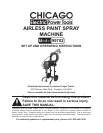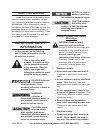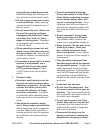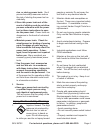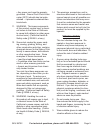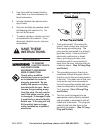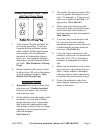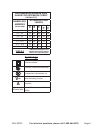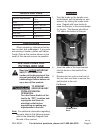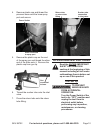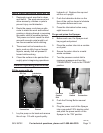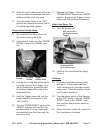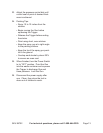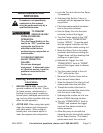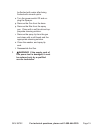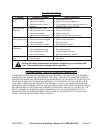SKU 99702 For technical questions, please call 1-800-444-3353. Page 3
plugs with grounded power tools.
Unmodied plugs and matching out-
lets will reduce risk of electric shock.
Do not expose power tools to rain b.
or wet conditions. Water entering
a power tool will increase the risk of
electric shock.
Do not abuse the cord. Never use c.
the cord for carrying, pulling or
unplugging the power tool. Keep
cord away from heat, oil, sharp
edges or moving parts. Damaged
or entangled cords increase the risk
of electric shock.
When operating a power tool out-d.
doors, use an extension cord suit-
able for outdoor use. Use of a cord
suitable for outdoor use reduces the
risk of electric shock.
If operating a power tool in a damp e.
location is unavoidable, use a
Ground Fault Circuit Interrupter
(GFCI) protected supply. Use of
a GFCI reduces the risk of electric
shock.
Personal safety3.
Stay alert, watch what you are do-a.
ing and use common sense when
operating a power tool. Do not use
a power tool while you are tired
or under the inuence of drugs,
alcohol or medication. A moment
of inattention while operating power
tools may result in serious personal
injury.
Use personal protective equip-b.
ment. Always wear eye protection.
Safety equipment such as respirator,
non-skid safety shoes, hard hat, or
hearing protection used for appropri-
ate conditions will reduce personal
injuries.
Prevent unintentional starting. c.
Ensure the switch is in the off-po-
sition before connecting to power
source and/or battery pack, pick-
ing up or carrying the tool. Carry-
ing power tools with your nger on
the switch or energizing power tools
that have the switch on invites acci-
dents.
Do not overreach. Keep proper d.
footing and balance at all times.
This enables better control of the
power tool in unexpected situations.
Dress properly. Do not wear loose e.
clothing or jewelry. Keep your
hair, clothing and gloves away
from moving parts. Loose clothes,
jewelry or long hair can be caught in
moving parts.
Only use safety equipment that f.
has been approved by an appropri-
ate standards agency. Unapproved
safety equipment may not provide
adequate protection. Eye protection
must be ANSI-approved and breath-
ing protection must be NIOSH-ap-
proved for the specic hazards in the
work area.
Power tool use and care4.
Do not force the power tool. Use a.
the correct power tool for your ap-
plication. The correct power tool will
do the job better and safer at the rate
for which it was designed.
Do not use the power tool if the b.
switch does not turn it on and off.
Any power tool that cannot be con-
trolled with the switch is dangerous
and must be repaired.
Disconnect the plug from the c.
power source before making any
adjustments, changing accesso-



